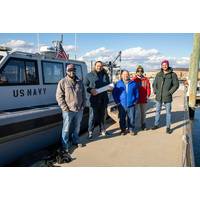
Bionet Sonar Tests Underwater Wireless Network at NUWC Division Newport
Naval Undersea Warfare Center (NUWC) Division Newport recently assisted Massachusetts-based small business Bionet Sonar by underwater testing its new wireless technology called HydroNet at the Narragansett Bay Test Facility for two days in February.HydroNet is an open, modular and programmable underwater modem that powers an autonomous wireless communications system bringing the internet underwater and empowering the network with artificial intelligence-driven, software-defined technologies.Its plug-and-play capability with remotely operated vehicles (ROVs), autonomous underwater vehicles (AUVs)
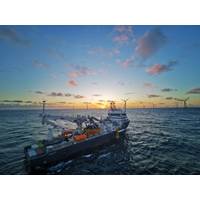
Maritime Safety: POB Tracking Will Become Essential Offshore, Says Olympic Subsea
tool; it also has a business benefit and customers are impressed about how the system works and what it can do, Sørdal said. In the future, “we will see this kind of system in all kinds of installations,” he predicted.ScanReach aims at new targetsWhat began as an innovative wireless network aimed at bringing the internet of things into the steel confines of ships’ hulls is rapidly finding market growth in specific applications, such as its ConnectPOB service that Olympic Subsea has made a central part of its commercial operating model.It took five years for ScanReach to develop

Deepwater 4G LTE System Deployed off US
RigNet, Inc. has deployed its first deepwater 4G LTE system in the Gulf of Mexico, dramatically increasing capacity to its licensed 4G wireless network for the region’s oil and gas customers. For the past 21 years, RigNet’s network in the GOM has delivered carrier-class services to the oil and gas industry servicing more than 300 facilities from Texas to Alabama. RigNet’s connectivity solutions exceed 100 Mbps. The new 4G LTE system expands and increases RigNet’s capabilities to deliver business grade services to deep water locations in the remote area of the
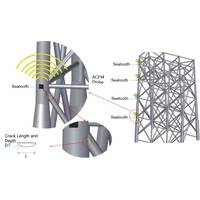
New Tool for Subsea Wireless Crack Monitoring
surface breaking cracks, and Seatooth is a subsea wireless communications system immune to biofouling, surface noise and turbidity that provides communications through seawater and through the splash zone. Combining the technologies together, Seatooth ACFM is a nonintrusive, easy to deploy wireless network solution which can be retrofitted to offshore structures and subsea assets. Seatooth ACFM units are user-configured to take readings as required, from once a minute to once per month. Seatooth ACFM can be configured as standalone sensors or within subsea wireless networks.
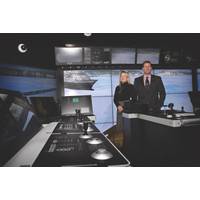
Station-Keeping In Ice
and orientation of the model. NRC OCRE’s in-house DP system is used to maintain station and record forces and moments. A camera is mounted over the bow with the purpose of observing ice-ice and ice-hull interaction. There are three azimuthing podded propellers fore, and three aft. Since a wireless network is connected to the model, there is no need for a tether. The ice produced in the tank—equivalent to first-year ice—was cut from a sheet into ¼-metre floes. Over the ensuing days, as a result of the impacts, variations in size and thickness developed, reports David
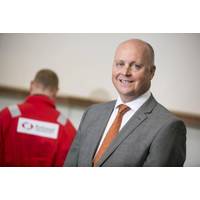
Ashtead Secures Deal with nCentric
Ashtead Technology said, “Capturing data from remote locations is still a major challenge for the industry. Today, most communications from oil and gas platforms and vessels to shore depend on expensive satellite links. The nCentric technology delivers a cost effective, efficient and reliable wireless network in large, hard-to-reach geographical areas.” The nCentric technology can be used to monitor offshore operations, increase communication and can relay high definition footage from Remotely Operated Vehicles (ROVs) in real-time. The system can be configured remotely and can be monitored
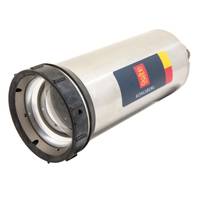
Kongsberg Upgrades Digital Stills Camera
. Captured images, in either RAW or JPEG format, can be stored to the camera’s 16GB internal memory or downloaded as soon as they are taken through the 10/100 Base-T connection. The camera supports both static and DHCP address protocols. Images can also be transferred by USB or over an ad-hoc wireless network. www.km.kongsberg.com (As published in the September 2014 edition of Marine Technology Reporter - http://www.marinetechnologynews.com/Magazine
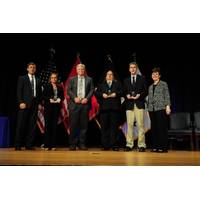
Awards Ceremony Recognizes NRL Researchers
and engineers who have made significant contributions to their fields and to the fleet. The NRL researchers honored as 2013 Top Scientists and Engineers are as follows: Information Technology Division Mr. Gautam B. Trivedi is recognized for leading research efforts to develop the Flying Squirrel Wireless Network Discovery Application Suite. This toolkit allows Department of Defense network defenders to detect, analyze and locate potentially unauthorized wireless transmitters that may compromise Department of Defense networks. The wide range of capabilities supported by this toolkit allows network defenders
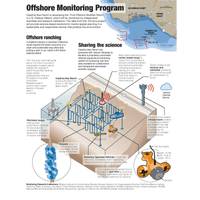
MTR 100: Catalina Sea Ranch
. This venture also supports the goals of the National Oceanic and Atmospheric Administration (NOAA), establishing a framework to allow sustainable domestic aquaculture to contribute to the U.S. seafood supply. Catalina Sea Ranch’s monitoring program, employing Verizon’s wireless network and cloud services for transmitting scientific data, will commence during the summer of 2014. The following research institutions will be analyzing the data: The Wrigley Institute for Environmental Studies, Scripps Institution for Oceanography, Southern California Marine Institute, California



 February 2024
February 2024





